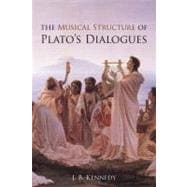
Note: Supplemental materials are not guaranteed with Rental or Used book purchases.
Purchase Benefits
What is included with this book?
| Preface | p. xii |
| Abbreviations | p. xvii |
| The nature and history of philosophical allegory | p. 1 |
| Rehabilitating ancient ways of reading | p. 2 |
| Allegory, Socrates and Plato | p. 5 |
| Symbols, reserve and Pythagoreanism | p. 9 |
| Persecution and the politics of allegory in classical Athens | p. 12 |
| Plato and Pythagoreanism: two puzzles | p. 14 |
| The allegorical Plato in history | p. 18 |
| Methodological precedent: early Christianity | p. 23 |
| Methodological precedent: Renaissance Platonism | p. 25 |
| Introducing the dialogues' musical structure | p. 29 |
| Structuring a dialogue | p. 31 |
| Ancient Greek music: three key ideas | p. 32 |
| Plato's symbolic scheme | p. 36 |
| Harmony and consonance, disharmony and dissonance | p. 37 |
| Sevenths and mixture | p. 38 |
| Guide to the strongest evidence | p. 40 |
| Methodology for line-counting | p. 45 |
| Canons of criticism | p. 46 |
| Responses to possible objections | p. 48 |
| Independent lines of evidence | p. 52 |
| Simple, objective measurements | p. 52 |
| Parallel passages at the same relative location | p. 54 |
| Ranges of positive and negative concepts | p. 56 |
| Preview of the musical structure in the Republic | p. 57 |
| A control: falsifiability and the pseudo-Platonica | p. 59 |
| An emphatic pattern in the Sympostum's frame | p. 61 |
| A theory of music | p. 62 |
| Recurring clusters of features in the frame | p. 63 |
| A new kind of commentary | p. 64 |
| Making the Symposium's musical structure explicit | p. 78 |
| phaedrus | p. 78 |
| Pausanias | p. 84 |
| Eryximachus | p. 96 |
| Aristophanes | p. 104 |
| Agathon | p. 116 |
| Socrates and Diotima | p. 126 |
| Alcibiades | p. 154 |
| Parallel structure in the Euthyphro | p. 178 |
| The same scale and the same symbolic scheme | p. 178 |
| Guide to the strongest evidence | p. 179 |
| The sevenths | p. 180 |
| The connection to music | p. 181 |
| Another kind of evidence: parallels between dialogues | p. 183 |
| The Euthyphro is not aporetic | p. 184 |
| Marking the notes | p. 185 |
| Extracting doctrine from structure | p. 236 |
| Aristotle on virtues and means | p. 236 |
| Stichometry and the divided line | p. 238 |
| Reading the dialogues in parallel | p. 240 |
| The logic of the argument and its consequences | p. 241 |
| Some implications | p. 244 |
| Summary of the case | p. 244 |
| Interpreting the: dialogues | p. 245 |
| Problems with anonymity and intentionality | p. 246 |
| Interpreting Plato, Pythagoras and Socrates | p. 247 |
| History of music and mathematics | p. 249 |
| History of literature and literary theory | p. 251 |
| Ancient book production, papyrology, textual studies | p. 251 |
| The forward path | p. 252 |
| More musicological background | p. 253 |
| Neo-Pythagoreans, the twelve-note scale and the monochord | p. 260 |
| Markers between the major notes | p. 265 |
| The central notes | p. 271 |
| Systematic theory of the marking passages | p. 274 |
| Structure in Agathon and Socrates' speeches | p. 287 |
| Euripides and line-counting | p. 288 |
| Data from the Republic | p. 291 |
| OCT line numbers for the musical notes | p. 294 |
| Notes | p. 297 |
| Bibliography | p. 309 |
| Index | p. 315 |
| Table of Contents provided by Ingram. All Rights Reserved. |
The New copy of this book will include any supplemental materials advertised. Please check the title of the book to determine if it should include any access cards, study guides, lab manuals, CDs, etc.
The Used, Rental and eBook copies of this book are not guaranteed to include any supplemental materials. Typically, only the book itself is included. This is true even if the title states it includes any access cards, study guides, lab manuals, CDs, etc.